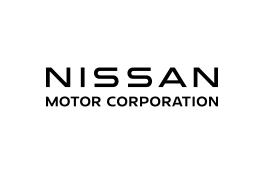march 16, 2021 - Nissan
Reinventing local transport and energy supply – all in one project
When it comes to building cities, everyone knows terms like “wood and nails” or “brick and mortar”. But what about “hub and spoke”?
It’s one of the concepts adopted by Nissan as it reimagines how people move through and power the cities they live in. The company hopes this approach will also help communities connect and stand strong against natural disasters.
To turn this vision into reality, Nissan and its partners have just signed an agreement with three local governments in Fukushima prefecture, north of Tokyo, Japan. A hub and spoke transport system is part of the project, as are new technologies to make the electricity supply more resilient by integrating electric vehicles (EVs) and their batteries.
A unique project
The agreement, known as the “Collaboration Agreement for Community Development Utilizing New Mobility” was launched on February 2 at an online signing ceremony. The coastal town chosen to anchor this event, Namie, was damaged and evacuated during the great 2011 earthquake and tsunami. Innovation – including tests of the hub and spoke system - is being weaved into its rejuvenation. A few years ago, Namie also became home to a new Nissan factory.
Senior leaders from the three local governments and the companies involved attended the ceremony. There was plenty of enthusiasm for the work that lies ahead.
“This project is unique. Nissan will not try build a complete new smart city but tailor all the advanced technologies to the existing needs of the local community,” says Nissan CEO Makoto Uchida, on behalf of the eight companies participating this project. “We want to support not only the reconstruction process in the affected region but also enrich people’s lives.”
A lasting connection
Nissan’s roots in Fukushima have been growing for nearly 30 years.
In 1992, it started building an engine plant in Iwaki. Two years later, V6 engines were rolling off the factory’s assembly line, to be fitted into luxury and high-performance cars around the world.
When the tsunami struck 10 years ago, the factory was also hard-hit and had to recover from the disaster. Bonds grew stronger as it worked with the community to get up and running again.
In 2018, Nissan opened a new factory in Namie to repurpose and recycle EV batteries. This initiative, which gives batteries a second life, is run by affiliate company 4R Energy.
Passion for people
Namie is at the heart of the new agreement, along with Futaba and Minamisoma. The project is wide-ranging and involves many community development activities. But broadly, it’s designed to make a difference in four ways:
- Introduce mobility services that help people get around
- use renewable energy to reduce carbon emissions
- energize communities
- help them be more resilient to natural disasters
Further information in the press release to download













































































































































































 Italian
Italian  Share
Share Share via mail
Share via mail  Automotive
Automotive Sport
Sport Events
Events Art&Culture
Art&Culture Design
Design Fashion&Beauty
Fashion&Beauty Food&Hospitality
Food&Hospitality Technology
Technology Nautica
Nautica Racing
Racing Excellence
Excellence Corporate
Corporate OffBeat
OffBeat Green
Green Gift
Gift Pop
Pop Heritage
Heritage Entertainment
Entertainment Health & Wellness
Health & Wellness